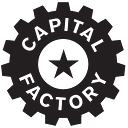Removing Barriers to Entry for Practical Applications of Digital Engineering and Startup Collaboration
Chris Benson, System and Mission Engineer at MITRE, Elisa Tiepel, cofounder of Essentium, MAJ Daniel “Fink” Finkenstadt, professor at the Naval Postgraduate School, MAJ Jason Zuniga, Army Operations Research Systems Analyst at Army Futures Command, discuss removing the barriers to entry for digital engineering and startup collaboration.
What you’ll find out
- How can the government start working with some of the smaller, non-traditional companies working on the model-based system engineering (MBSE) and digital engineering front?
- You see very different understandings about digital engineering throughout organizations. What are the different perspectives on digital engineering from thought leaders in the industry?
- What is the single biggest barrier to entry for practical applications?
Key takeaways
- “We’re looking at ways in which we can take gamification AR and different types of alternative means to engineer a process. And how do we engineer a process before it goes live? Right? So it’s not just software, it’s not just 3d printing. Those are things we’re looking at too, in terms of the acquisition piece. What I think is… talked a lot about is why don’t we have a test squadron for business operations? We test every other system but the most expensive one that causes the most problems. We never test it.” — MAJ Daniel “Fink” Finkenstadt, Naval Postgraduate School
- “I’d love to see more private, public partnerships because I think there’s a lot of stuff that is happening in the private sector, I should say. And on the commercial side of things that either, if just worked in properly, it could really help the government. And so I think it’s still a barrier even though we’re doing great and it’s amazing to see the types of programs we’re participating in. We’d love to see more of that because I think that we’re not seeing enough of our innovation stay in our country. And so I would love to have more of that very removed where it’s harder to work maybe with the government traditionally.” — Elisa Tiepel, Essentium Inc.
- “I think that from our perspective, probably one of the biggest pain points is [the] persistent legacy mindset. And I think that stretches across the board from everything like agile acquisition all the way to cybersecurity policies. One of those barriers with the acquisition side is just being able to understand it and work with the government — the timelines and everything that we consistently hear. But being able to get to that kind of agile acquisition strategy that is coherent, you’re able to work with traditional partners more easily [and] getting us sort of [in the] right direction because getting away from that legacy mindset is about culture change, right?” — MAJ Jason Zuniga, Army Futures Command
Who you’ll hear from
MAJ Daniel “Fink” Finkenstadt, professor at the Naval Postgraduate School
About Fed Supernova
Fed Supernova, presented by Microsoft, is a virtual conference highlighting federal innovation in Texas. This first-of-its-kind interactive experience will draw national attention and connect leading entrepreneurs, investors, thought leaders, corporations, and decision-makers from around the world.
About Capital Factory
Capital Factory is the center of gravity for entrepreneurs in Texas, the number one state for startups in the U.S. Thousands of entrepreneurs, programmers, and designers gather day and night, in-person and online for meetups, classes, and coworking. With boots on the ground in Austin, Dallas, Houston, and San Antonio, we meet the best entrepreneurs in Texas and introduce them to investors, employees, mentors, and customers. According to Pitchbook, Capital Factory has been the most active, early-stage investor in Texas since 2010.
